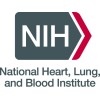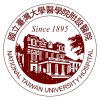
Use of Forteo (Teriparatide) in Posterolateral Lumbar Spine Fusion
Lumbar SpondylosisLumbar Spondylolisthesis1 moreThe purpose of this study is to determine the effects of 12 weeks of daily treatment with teriparatide on spine fusion in adult patients who are undergoing multi-level posterolateral spine fusion surgery for degenerative conditions of the lumbar spine.

Chewing Gum Facilitates an Earlier Return to Bowel Function in Pediatric Scoliosis Patients: A Prospective...
ScoliosisThe purpose of this study is to evaluate the effectiveness of chewing gum on reducing post-operative ileus and reducing post-operative gastrointestinal symptoms in pediatric patients undergoing surgical correction of scoliosis. This study would provide minimal risk to its study population, and has the opportunity to provide a benefit to patients undergoing scoliosis surgery. If shown to be effective, this could lead to changes and improvement of the post-operative course for pediatric scoliosis patients.

Epsilon-Aminocaproaic Acid to Reduce the Need for Blood Transfusions During and Following Spine...
ScoliosisKyphosis3 moreIndividuals who undergo spine surgery often have a significant loss of blood and may require multiple blood transfusions. Research has shown that epsilon-aminocaproic acid (EACA) may reduce the amount of blood lost during surgery, which would decrease the number of blood transfusions required. This study will evaluate the safety and effectiveness of EACA at reducing blood loss and the need for blood transfusions in individuals undergoing spine surgery.

Effects of Lateral Trunk Support on Spinal Alignment in Spinal Cord Injured Persons
ScoliosisSpinal Cord InjuryThe effects of lateral trunk supports (LTS) in special seating on the spinal alignment of 17 spinal cord injured (SCI) subjects with scoliosis were studied using bi-planar radiographs. The LTS improved significantly the functional scoliotic spinal alignment in the frontal and sagittal planes regardless of the severity of scoliosis.

Self Correction Exercises for Idiopathic Scoliosis Among Adolescents. A Randomised Controlled Trial...
Scoliosis IdiopathicAdolescent idiopathic scoliosis (AIS) is a three-dimensional spinal deformity with an unknown cause that affects adolescents aged 10 or older. A standing posterior-anterior radiograph with a Cobb angle greater than 10 degrees is used to make the diagnosis. Depending on the severity of the spinal deformity, conservative treatments and surgery are used to treat AIS. Patients whose spinal curvature is greater than 45 degrees are typically considered for surgery. The majority of patients with AIS receive conservative treatments to prevent and slow the progression of the curve. 2 Orthotic intervention (OI) and scoliosis-specific exercise (SSE) are commonly recommended by the International Society on Scoliosis Orthopaedic and Rehabilitation Treatment for patients with a curvature between 20 and 45 degrees. Self correction exercises are the group of spinal extension, lateral spinal flexion and rotational exercises performed to correct spinal deviation. Exercises are performed in a different fundamental postures.

Brace Weaning Protocol Comparing Gradual and Immediate Weaning
Adolescent Idiopathic ScoliosisThis is a non-blinded, randomized controlled trial for testing two brace weaning protocols namely immediate removal of brace or gradual weaning of brace over a course of 6 months for adolescent idiopathic scoliosis (AIS) patients. These patients will have follow-up visits at 6-months, 12-months and 24-months intervals. By comparing between the two groups in terms of change of Cobb angle, truncal balance, health-related quality of life measures at the set time-points, the investigators aim to gain insights of whether different brace-weaning protocol will be more beneficial in patients' clinical and quality of life measure outcomes.

Limited-efficacy Testing of SDS and NEMOST for Early Onset Neuromuscular Scoliosis
Neuromuscular ScoliosisDistraction System1 moreThe primary aim of this study is to investigate and describe the limited efficacy of the Spring Distraction System (SDS) and Bilateral One Way Rod (NEMOST) in maintaining curve reduction without repeat lengthening procedures and complications. Secondary aims are to describe growth of the instrumented spine, health-related quality of life, and to compare both devices.

Multidisciplinary Perioperative Care Pathway in Adolescents Undergoing Posterior Spinal Fusion Surgery...
AnalgesiaScoliosis Idiopathic2 morePosterior Spinal fusion (PSF) is one of the most invasive orthopedic surgical procedures in children and adolescents, often characterized by extensive tissue trauma, and severe postoperative pain. In addition to pain, the postoperative period is complicated by the side effects of opioids such as nausea and vomiting, itching and sedation. Various studies have shown that pain in the direct postoperative phase is an important determinant for development of chronic post-surgical pain. The consequences of untreated acute pain are known and can also contribute to chronification in pain.

Coping After Pediatric Scoliosis Surgery
Adolescent Idiopathic ScoliosisThis is a prospective, randomized controlled trial evaluating the efficacy of expanded patient education and coping skills on pain management following multilevel pediatric spinal surgery. The intervention will include a smartphone- based platform and a comprehensive library of peri-operative educational and coping skills videos as a means for better addressing the psychosocial elements of a child's individual pain experience. The study evaluated whether this novel intervention will reduce pain, improve outcomes and accelerate functional recovery up to 6 weeks after surgery.

Low-dose S-ketamine and Dexmedetomidine in Combination With Opioids for Postoperative Analgesia...
Scoliosis CorrectionPostoperative Analgesia3 moreScoliosis correction surgery is followed with severe pain. Patients after scoliosis correction surgery usually require high dose opioids and long duration analgesia, which may increase side effects and even drug tolerance. S-ketamine is the pure dextrorotatory enantiomer of ketamine with stronger analgesic effect and less side effects, but mental side effects is a major concern. Dexmedetomidine can be used as an analgesic supplement; it also improves sleep quality in postoperative patients. We hypothesize that low-dose ketamine and dexmedetomidine in combination with opioids may have synergistic effect in analgesia and reduce drug-related side effects. This study aims to explore the effect of low-dose of S-ketamine and dexmedetomidine in combination with opioids for postoperative patient-controlled intravenous analgesia in patients following scoliosis correction surgery.
